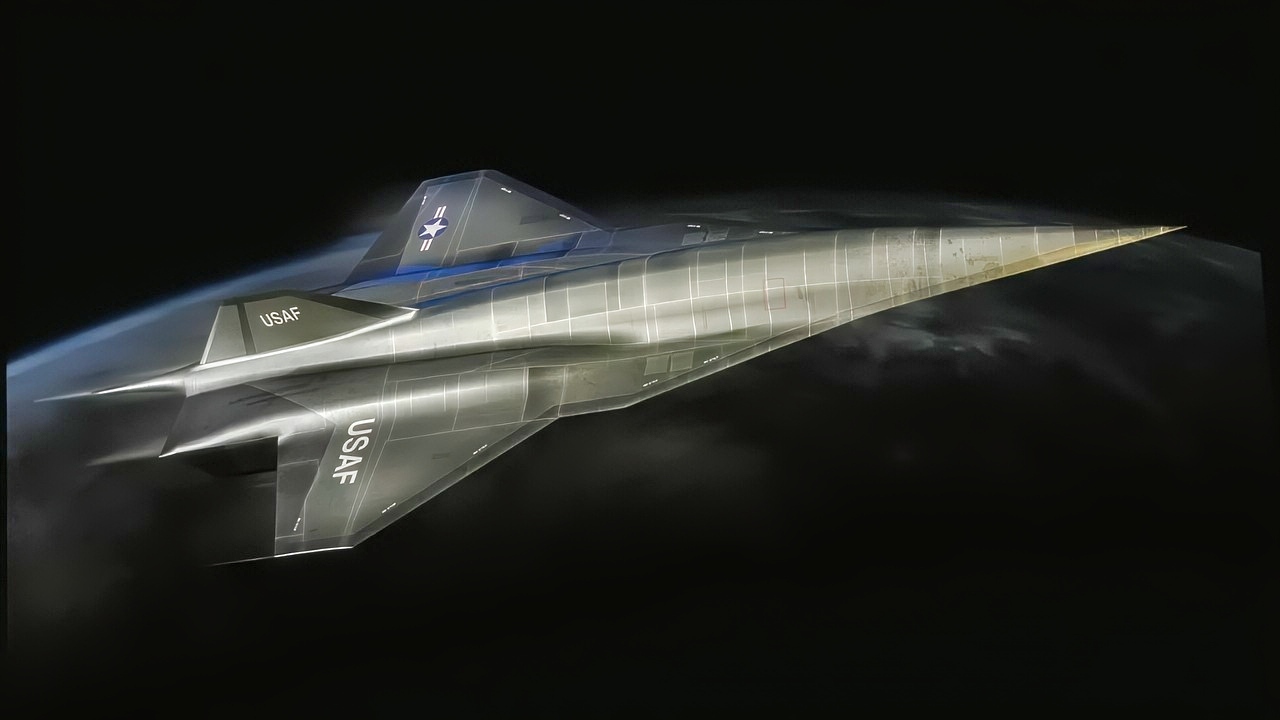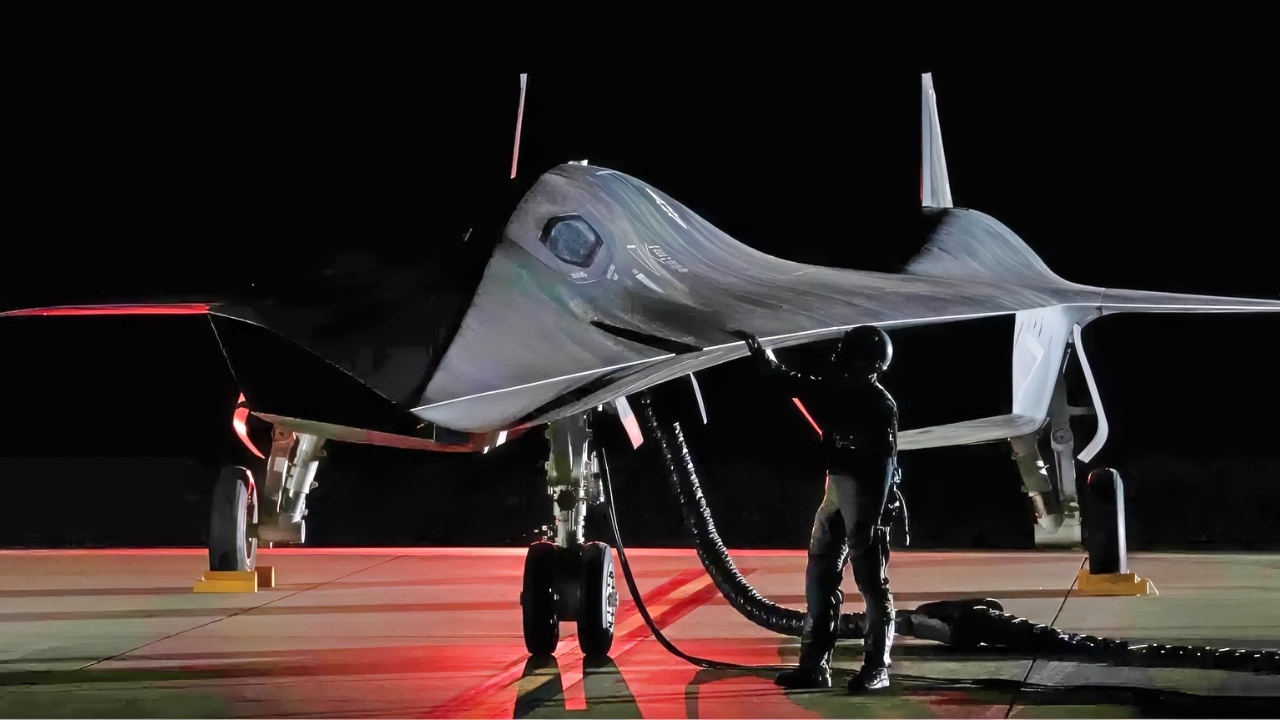Key Points and Summary – The SR-72 “Darkstar” is envisioned as a Mach-6, air-breathing ISR platform—but could it strike?
-Hypersonic speed complicates weapons separation, fratricide risk, bay-door heating, and loiter time. TBCC propulsion improves range by using atmospheric oxygen, yet thermal loads and fuel burn still punish time-on-station.

SR-72 from Lockheed Martin Image

SR-72 Darkstar Lockheed Martin Image.
-A plausible path is standoff, air-launched hypersonic munitions—think DARPA’s HAWC lineage or Lockheed’s HSSW—fired on deconflicted trajectories that avoid the vehicle’s shock and flight path.
-An unmanned SR-72 paired with such weapons could penetrate quickly, fire from outside dense defenses, and egress—but it demands exquisite integration of thermal management, guidance, and separation dynamics to work.
The SR-72 Darkstar Bomber?
Twenty-seven years after its retirement, the SR-71 Blackbird remains the fastest air-breathing aircraft ever built—officially Mach 3.2 but unofficially at or above Mach 3.5, which continues to be a major source of bragging rights for its manufacturer, Lockheed’s (now Lockheed Martin’s) legendary “Skunk Works” division.
(Yes, the North American Aviation [NAA] X-15 flew nearly twice as fast—at an incredible Mach 6.7—back in 1967, but that plane was rocket-powered, not an air-breather.)
The Blackbird never carried any weapons; instead, it was used strictly as an intelligence, surveillance, and reconnaissance (ISR) platform.
Its supposed direct successor, the SR-72 “Darkstar” AKA “SOB” (as in “Son of Blackbird”), is also envisioned primarily for the ISR role. Still, there is also considerable discussion about using the SOB as a bomber or strike aircraft. The question is whether packing ordnance would even be feasible for the SR-72, given its supposed hypersonic, Mach 6 airspeed capability?
Challenges to the SR-72 as a Bomber
A major concern with adding weapons to the “Darkstar” would be inadvertent self-destruction, i.e., running into its own projectiles after firing due to its extreme speed. This was a significant reason for nixing weapons on the SR-71.

SR-72 Darkstar. Image Credit: Creative Commons.

SR-72 from Lockheed Martin. Image Credit: Lockheed Martin.
To put things in perspective, the fastest bomber ever to attain operational status is the Russian Tupolev Tu-160 “Bely Lebed” (“White Swan;” NATO reporting name “Blackjack”), which tops off at Mach 2.0. (The American-made XB-70 Valkyrie reached Mach 3.0, but never made it to the complete production phase.)
Meanwhile, the fastest fighter plane ever built, the Soviet-built MiG-25 “Foxbat,” has an on-paper max airspeed of Mach 3.2 but is practically limited to Mach 2.8. Even the 6th-generation F-47 Next Generation Air Dominance (NGAD) is expected, its own airspeed is projected to top off at a comparatively modest Mach 2+.
Another major concern would be the limitations on loitering capability, i.e., the warbird’s ability to make a second or third pass against a target, due to the lack of fuel efficiency that tends to be the downside of higher speeds.
For example, two of the best 4th-Generation fighter-bombers that the US Air Force has used for ground-attack missions, the Lockheed Martin F-16 Fighting Falcon and the Boeing F-15E Strike Eagle, are superbly accurate in their payload deliveries.
Still, at speeds of roughly Mach 2.0 and 2.5, respectively, they’re big-time gas guzzlers, resulting in a reduced Time Over Target (TOT).
Possible Solution #1: TBCC
A potential mitigating factor for the fuel efficiency dilemma would be the SR-72’s turbine-based combined cycle (TBCC) hypersonic propulsion system. The advantage of TBCC would be the use of scramjet engines, which can burn atmospheric oxygen, thereby obviating the need to carry large fuel tanks containing oxidizer, as is the case with conventional rockets.
Okay, that’s all well and good, but what about the SOB’s weaponry quandaries? That brings us to…
Possible Solution #2: HAWC
One potential solution for weaponry could be gleaned from the Defense Advanced Research Projects Agency (DARPA) program, specifically the Hypersonic Air-breathing Weapon Concept (HAWC) project.
As the program’s official info page describes it:
“The Hypersonic Air-breathing Weapon Concept (HAWC) program is a joint DARPA/U.S. Air Force (USAF) effort that seeks to develop and demonstrate critical technologies to enable an effective and affordable air-launched hypersonic cruise missile. The program intends to emphasize efficient, rapid and affordable flight tests to validate key technologies. [emphasis added]”
HAWC plans to pursue flight demonstrations to address three critical technology challenge areas or program pillars—air vehicle feasibility, effectiveness, and affordability.
Technologies of interest include:
-Advanced air vehicle configurations capable of efficient hypersonic flight
-Hydrocarbon scramjet-powered propulsion to enable sustained hypersonic cruise
-Approaches to managing the thermal stresses of high-temperature cruise
-Affordable system designs and manufacturing approaches
-And for good measure…
Possible Solution #3: HSSW
Once again, Lockheed Martin’s name comes up. Not to be outdone, the firm recently developed the High-Speed Strike Weapon (HSSW), which can fire hypersonic weapons faster than any other system and instantly achieve hypersonic speeds; for good measure, it can sustain these speeds over extended periods.
Conceivably, the SR-72 could fire the HSSW at an angle that avoids the risk of the warbird running into (and afoul of) its own ordnance, thereby canceling out the aforementioned inadvertent self-destruction concern.
Contrary to its fictitious depiction in the iconic opening scene from the 2022 cinematic blockbuster “Top Gun: Maverick,” the real-life iteration of the SR-72 is expected to be unmanned.
Ergo, the tandem of the SOB and the HSSW could be an ideal tag team for striking targets in hotly contested battle spaces, wherein the use of manned warbirds is too slow and too risky for aircrew lives.
About the Author: Christian D. Orr, Defense Expert
Christian D. Orr is a Senior Defense Editor. He is a former Air Force Security Forces officer, Federal law enforcement officer, and private military contractor (with assignments worked in Iraq, the United Arab Emirates, Kosovo, Japan, Germany, and the Pentagon). Chris holds a B.A. in International Relations from the University of Southern California (USC) and an M.A. in Intelligence Studies (concentration in Terrorism Studies) from American Military University (AMU). He is also the author of the newly published book “Five Decades of a Fabulous Firearm: Celebrating the 50th Anniversary of the Beretta 92 Pistol Series.”
More Military
The British Army’s Big Challenger 3 Tank Mistake Still Stings
F-35 Stealth Fighter Program Has Passed the Point of No Return
The Iowa-Class Battleships Have A Message for Any Navy on Earth
Canada Has a Big Message for the Eurofighter Typhoon
The Mach 2 F-16 Fighting Falcon Fighter Has a Message for the U.S. Air Force











Krystal cane
November 5, 2025 at 9:12 am
That is not a picture of an SR-71 and that image that is an A12 if you’re going to post pictures of things at least know what the hell you’re doing You know I’m so sick of these stupid post because they’re pathetic America has two words for this Russia has two words for that blah blah blah You guys are a bunch of idiots riding this crap You don’t even know what airplanes you’re showing
Tom
November 6, 2025 at 1:29 pm
Aren’t those photos of the prop plane that Tom Cruise “flew” at. Mach 10 in “Top Gun 2?”
Mike
November 7, 2025 at 3:15 pm
Looks like a mockup of the Aurora that flew in the late 80s early 90s. Used to stage at Machrihanish during its short career.
Marcin
November 8, 2025 at 8:31 am
100% A-12 in the stock photo.